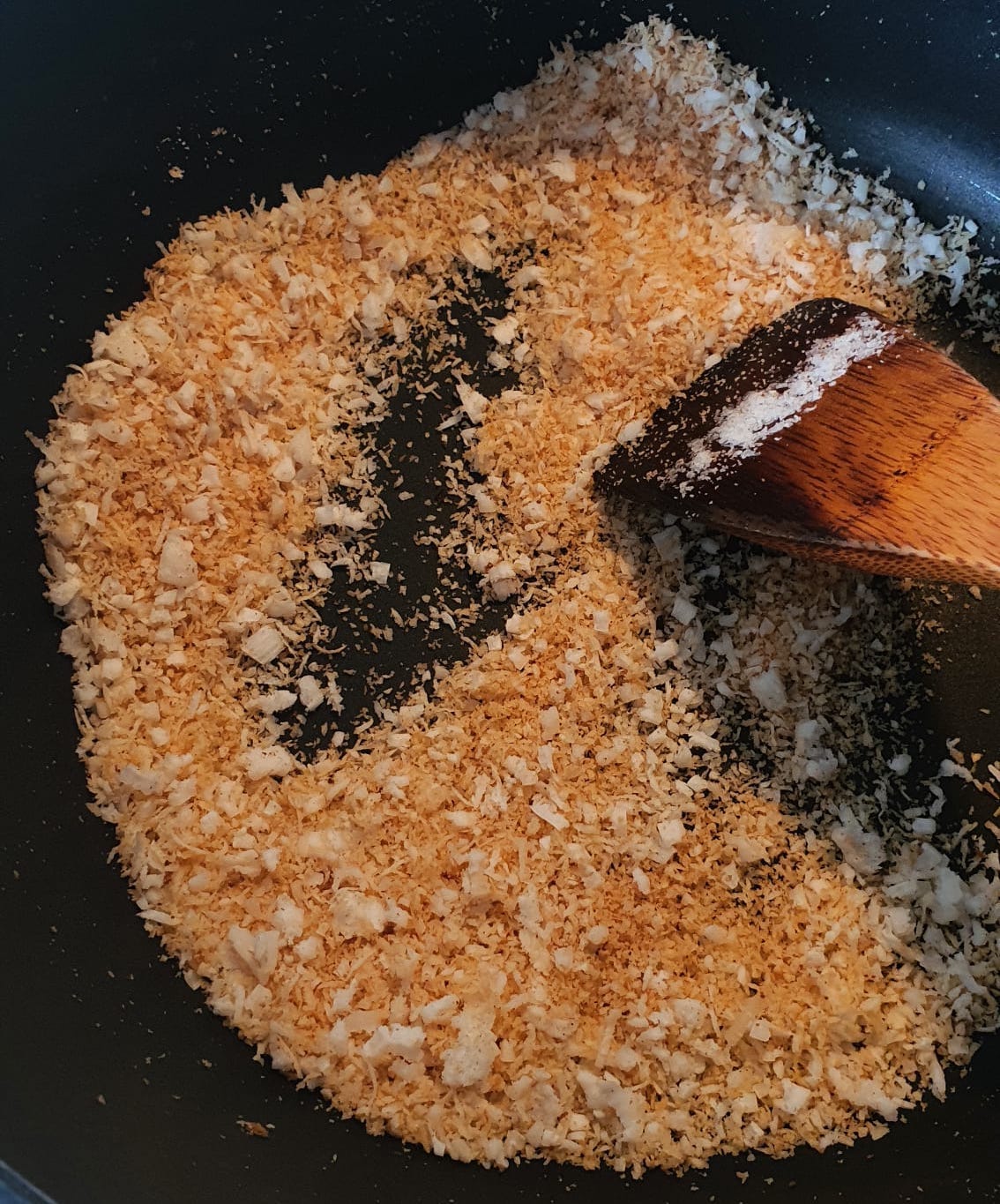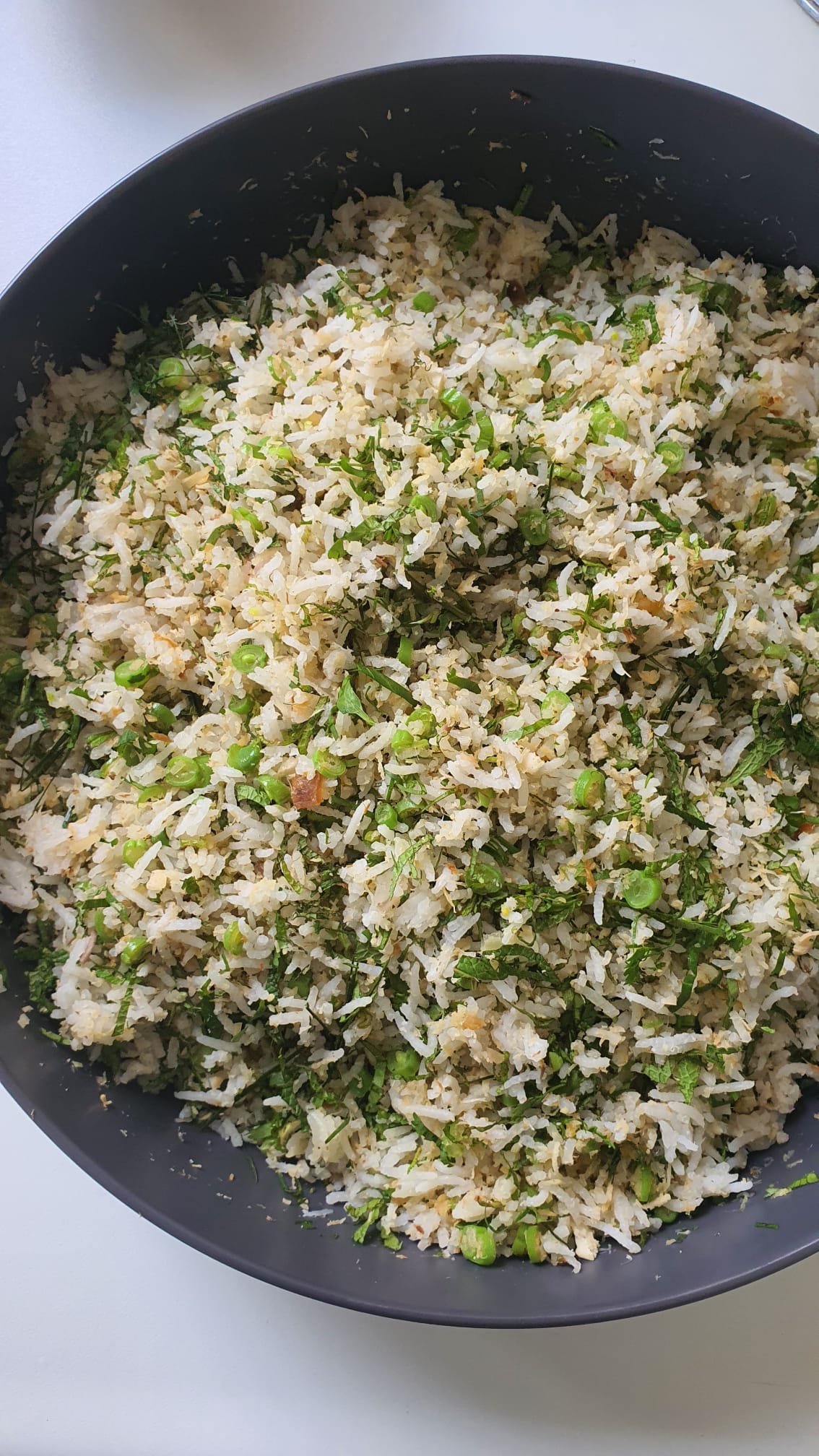Nasi ulam
Even though Singapore is a young nation (59 this year), many food traditions feel deeply sacred. Conversations about food can be unexpectedly charged, fuelled by a sense of pride that rivals the Italians. So cherished and lauded are certain dishes in the local repertoire that the heritage food space in Singapore - be it in the cooking or writing - can feel like treacherous territory. That ordinary Singaporeans care about the minutiae that others may gloss over as trivial is exactly what makes our cuisine and food culture great. Protectiveness towards food traditions can serve as a wonderful corrective and antidote to rootlessness in an increasingly globalised world. But drawing boundaries of “right” and “wrong” solely based on how similar or dissimilar a rendition of a dish is to our experience of it is not only arrogant, but also dismissive of the plurality with which Singaporeans cook. This attitude is what will eventually lead to the stagnation, irrelevance, and, perhaps, even death of a great cuisine.
A dish that many have strong feelings about in Singapore is nasi ulam, a Malay and Peranakan dish that feels age-old. Even though the expedient translation of nasi ulam is herb rice, such a definition is wholly inadequate because ulam sprawls beyond the realm of herbaceous plants. A generic term for a whole gamut of indigenous edible plants, ulam was traditionally enjoyed raw or minimally cooked, alongside sambal, as part of daily meals. Vegetables, fruits, flowers, aromatic stems can all be considered ulam. Some examples:
Herbs: Mint, Thai basil, ulam raja, turmeric leaves, wild pepper leaves, Vietnamese mint, lime leaves, coriander, culantro, lemon basil
Vegetables: Long beans, cucumber, wing beans, fiddlehead ferns
Other aromatics: Ginger flower, blue pea flower, lemongrass, turmeric
Before Singapore’s rapid urbanisation beginning in the ‘70s, many of these wild plants grew in the backyards of people’s homes. Those who did not cultivate their own foraged for them around the kampungs or jungle fringes for their meals, as per Malay culinary tradition.1
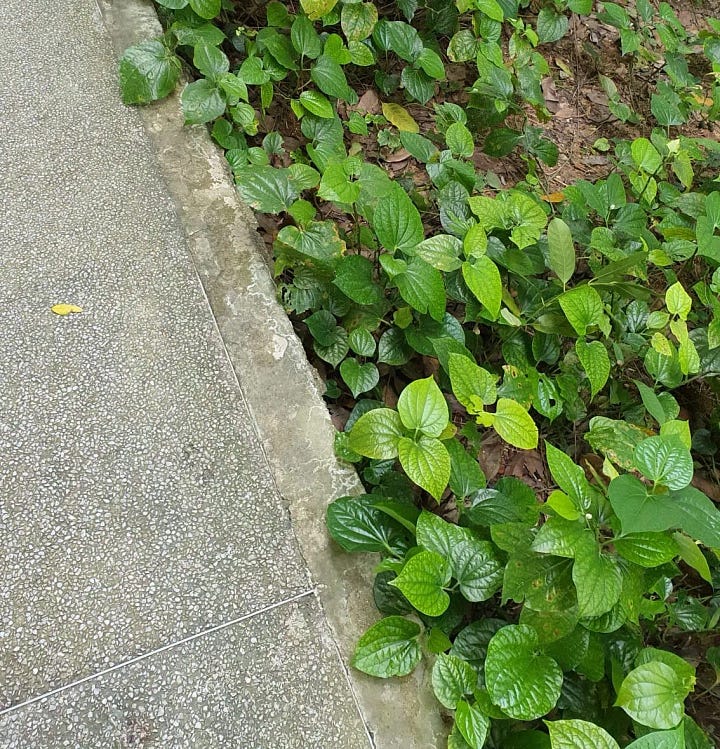
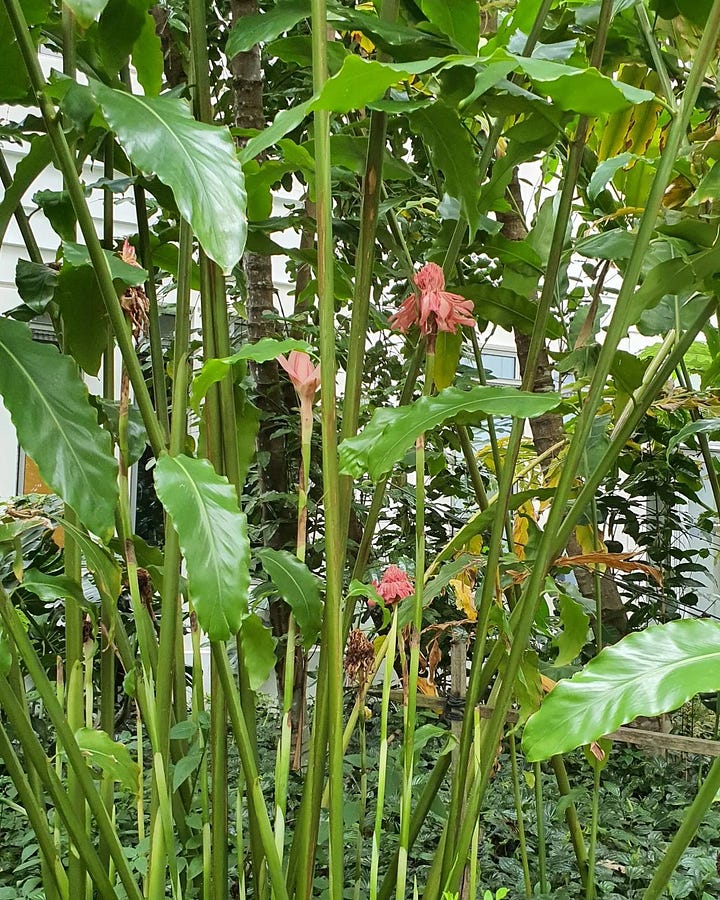
It wasn’t always necessarily the fragrance or texture of these plants that drew eaters to them. Many ulam, in fact, have challenging mouthfeels or carry bitterness that modern tastes might be unaccustomed to. Nonetheless, the Malays, Peranakans, and Orang Asli (indigenous people of Peninsular Malaysia) have consumed ulam for generations because they were keenly aware of their inherent medicinal properties that range from anti-diabetic to anti-cancer properties.2 That local cooks were fluent in ulam’s medicinal qualities, when modern science is only now focusing its attention on these Southeast Asian edible plants, is an astounding achievement.
David Hock Jin Neo, one contributor in an ulam resource by Eric Olmedo titled Ulam: Regenerative Edible Flora from Southeast Asia, writes, “My great grandaunt apparently picked and gathered as many as 16 different types of herbs to make her nasi ulam… The idea is to use as many herbs as possible and harness all the nutritional and medicinal values of the different herbs. They must be finely sliced and well mixed so that you are arrested with a myriad different flavours with each mouthful of nasi ulam you take.” In expressing that nasi ulam is as much medicine as it is a form of delight, his words uncover the underlying belief of food that is necessary for good health and that which is necessary for a good life residing in overlapping, rather than separate, spheres.
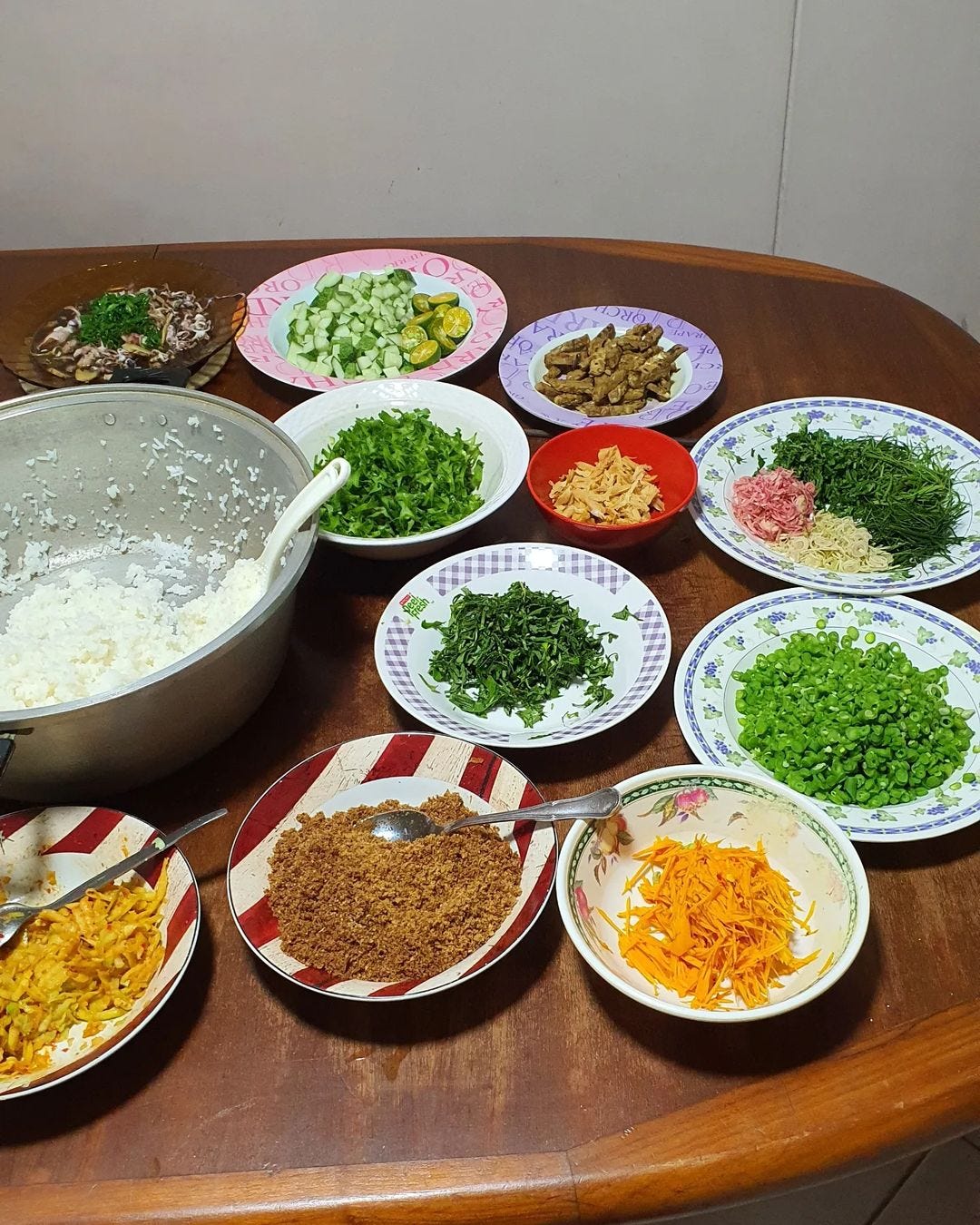
Nasi ulam is synonymous with dexterity with a knife and elbow grease. As a tossed salad, the true art in its preparation does not lie so much in the cooking but in the assembly and preparation of the ingredients. For a refined appearance, the best mouthfeel, and even distribution of aroma throughout the salad, the assembled range of ulam is rendered to a fine chiffonade. According to Alan Goh of Travelling Foodies, a prospective daughter-in-law’s culinary capabilities in some Chinese Peranakan households were tested on the basis of this dish.
It is the combination of nasi ulam’s reputation for being labour- and skill- intensive, and the diminishing of ulam from Singapore’s urban landscape that has led to its slow death in homes. On the upside, in recent years, nasi ulam has been experiencing glimpses of a revival as the poster child of eat-local and healthy-eating movements. Urban farming communities occasionally conduct nasi ulam workshops, and local chefs are beginning to champion the dish on menus (Cuba.sg and Straits Curry Co, for example). Definitely a trend that I can get behind. The following photos are from last March in Singapore where I cooked nasi ulam with NUS students - a Peranakan faculty staff who helped out told me that she had not cooked the dish since she was a child, and it warmed my heart!
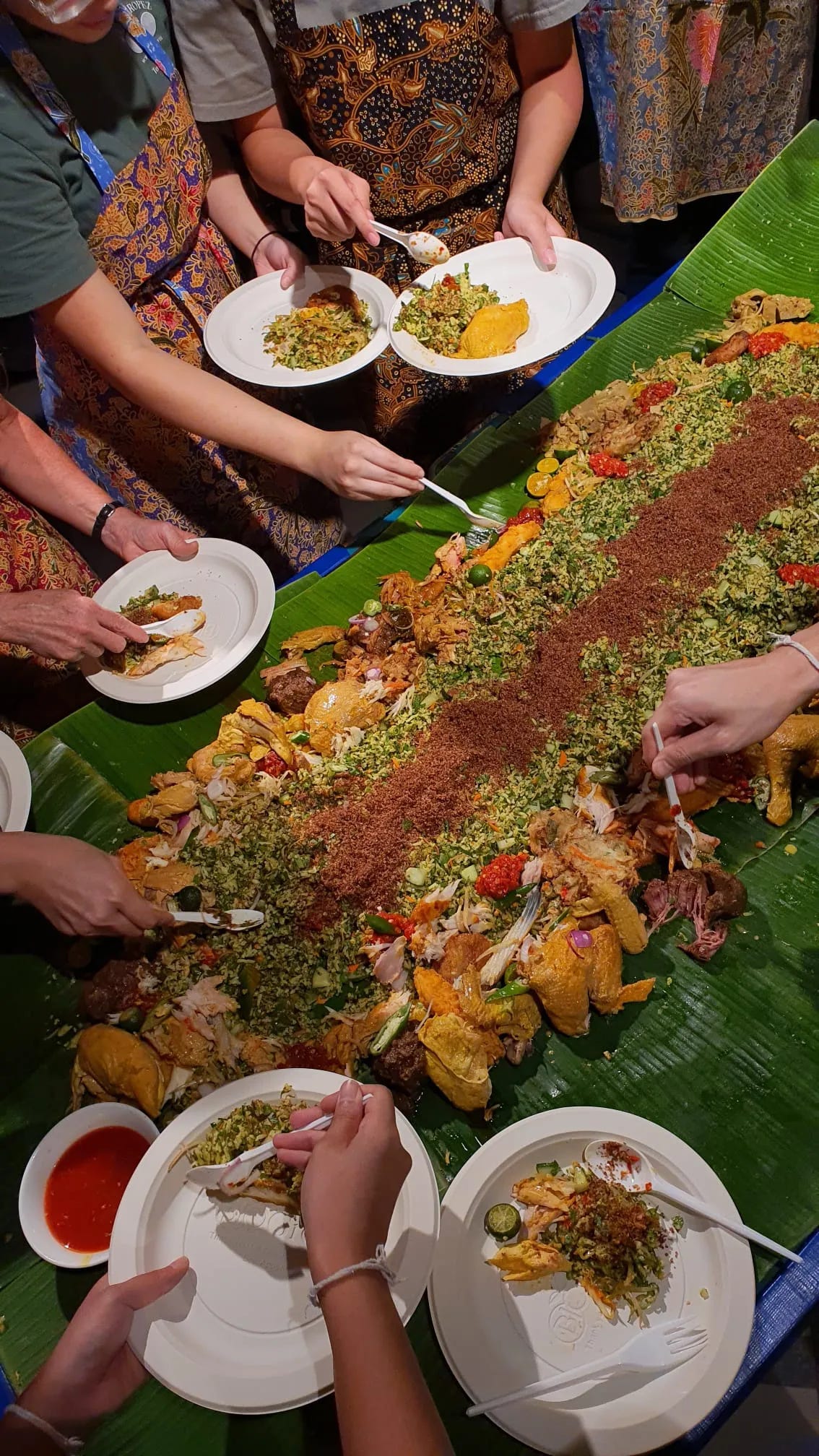
I thought of preparing nasi ulam last week for my in-laws because they had brought me some salted fish from Singapore and I learnt that they had not eaten the dish before. I selected the simplest and most available herbs here - mint and coriander, available at every single supermarket - and supplemented them with frozen and thawed lime leaves and lemongrass from the Asian grocer. In the spirit of celebrating what’s abundant around you, I was tempted to use flowers of the magnolia trees that were in bloom in our neighbourhood that are said to possess a ginger-like flavour, but decided against picking them off my neighbour’s tree! For the vegetables, I went with French beans, which are a great substitute for the long beans and wing beans that we get in Singapore. While some traditional recipes tend to use jasmine rice, I went with basmati rice for its lightness and the way the grains rest in separate, individual grains.
Only rice and herbs are insufficient in producing a memorable nasi ulam. I used a combination of salted fish and dried shrimp to add umami to the dish, pan-frying them and turning them to floss to lace each grain. You don’t need very much - a little goes a long way.
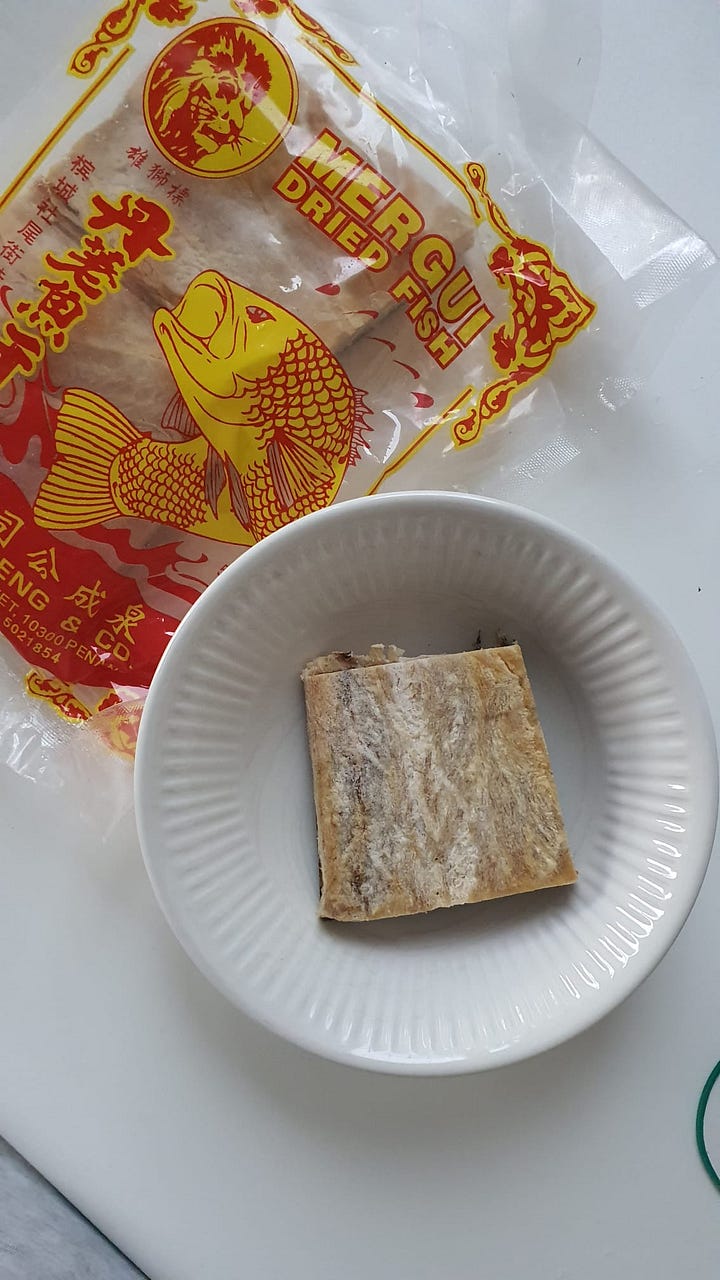
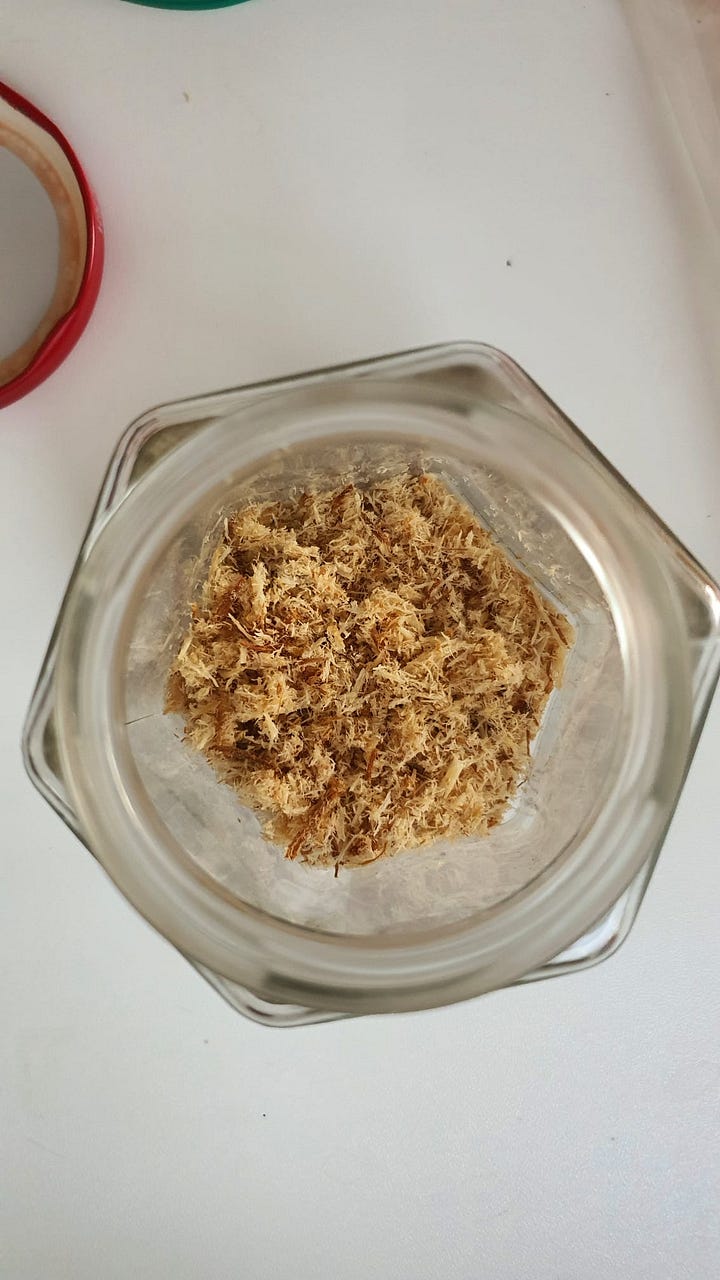
Also crucial for adding richness and fragrance to the rice is kerisik, or toasted grated coconut. No additional oil is needed when frying coconut as it is inherently oil-rich, but I’ve found it crucial to use a non-stick pan to prevent sticking and burning.
Nasi ulam could be a side or a complete meal on its own (some cooks cook and flake fish into the salad to make it more substantial). Because it is light and herbaceous, nasi ulam pairs well with curries and stews that are on the richer side. We enjoyed ours with curry debal, slices of cucumber, and sambal on the side. My father-in-law, who is accustomed to chunks of salted fish in fried rice, marvelled at how the ingredient, when flossed, can be used to such subtle effect. If you’re vegetarian or vegan, in place of salted fish, toast more grated coconut or try using a umami plant-based ingredient such as shredded nori - though don’t tell the purists! As for the herbs, think of this recipe as a base recipe to play around with - the key is to use whatever’s good and abundant in your locality, but sticking to the base combination of herbs that I provide in this recipe produces stunning results on its own.
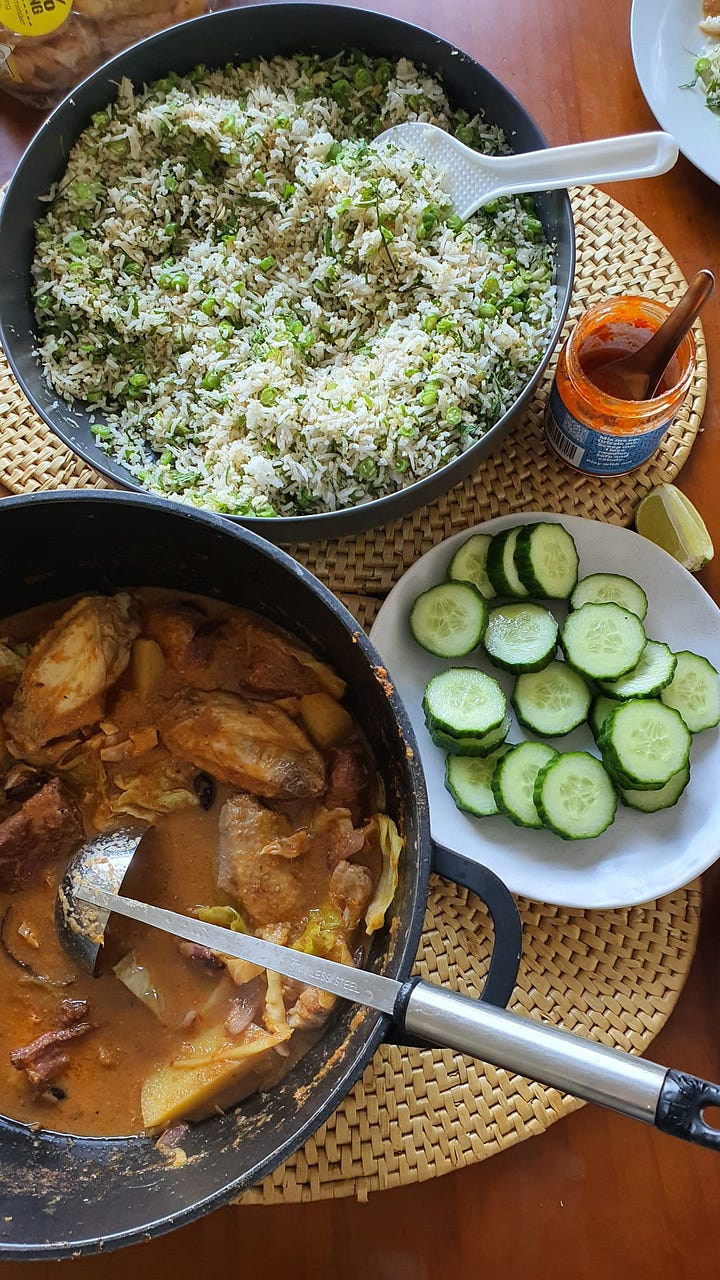
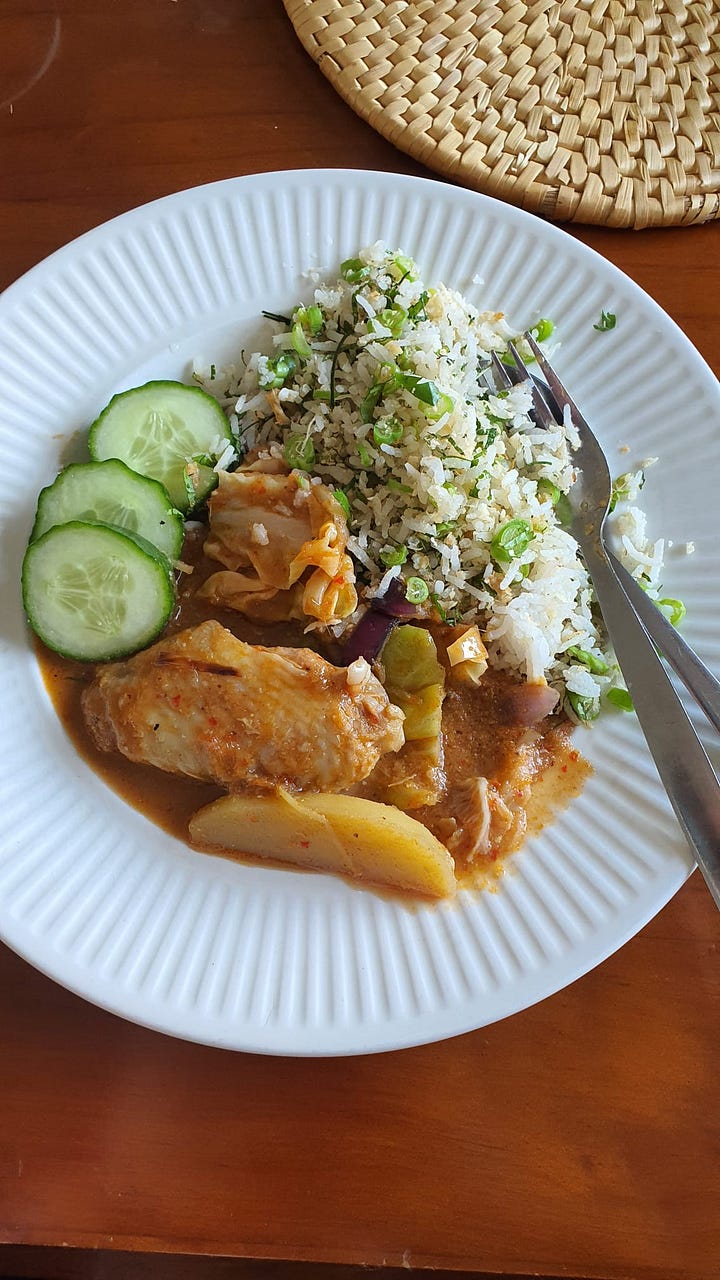
Nasi Ulam
MAKES 6 SERVINGS





